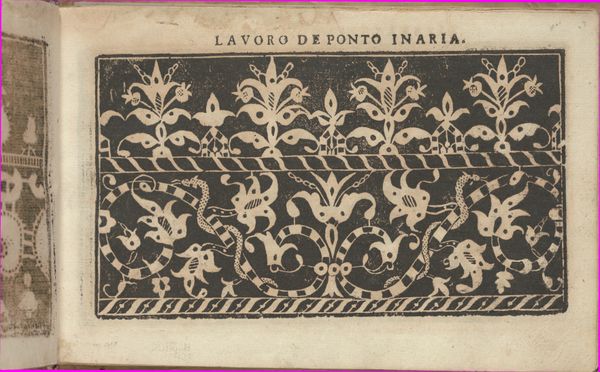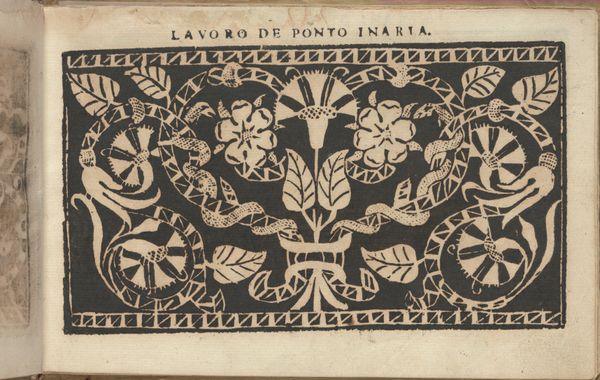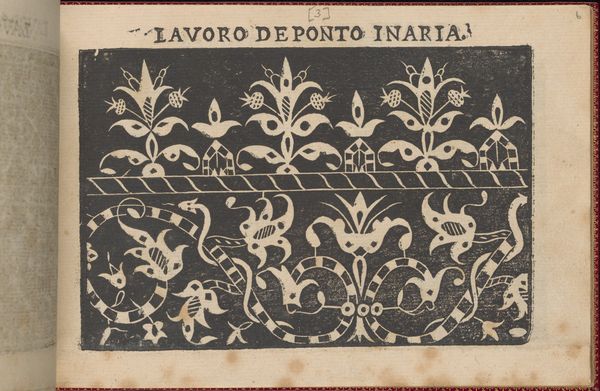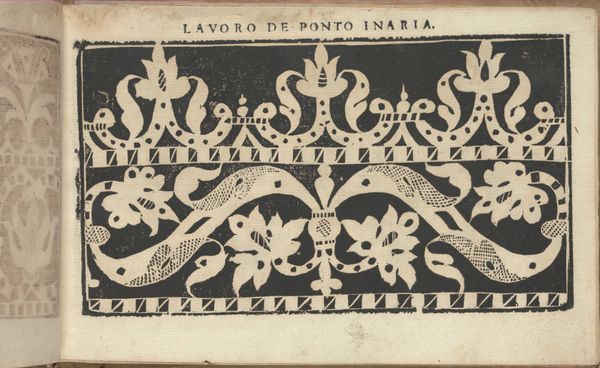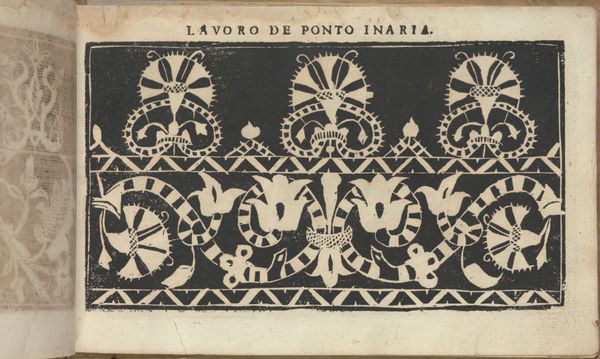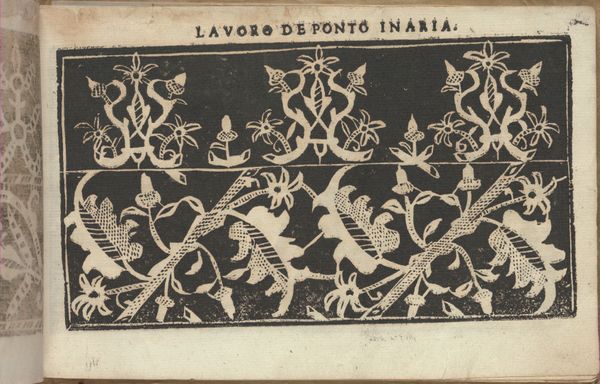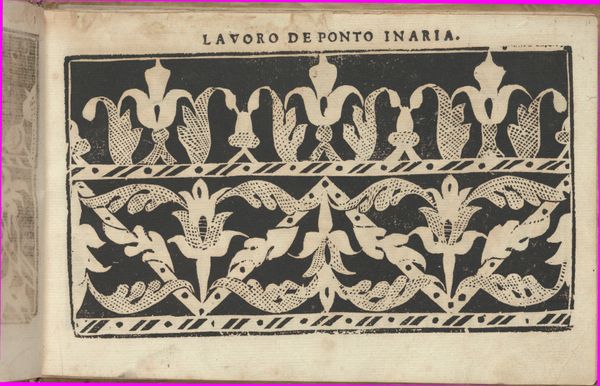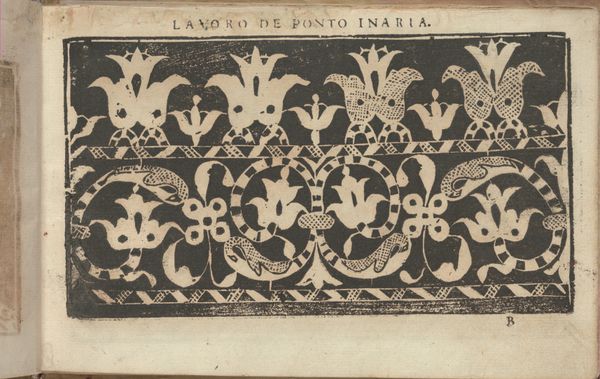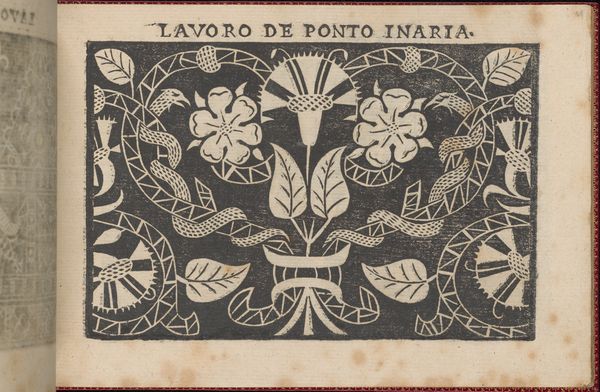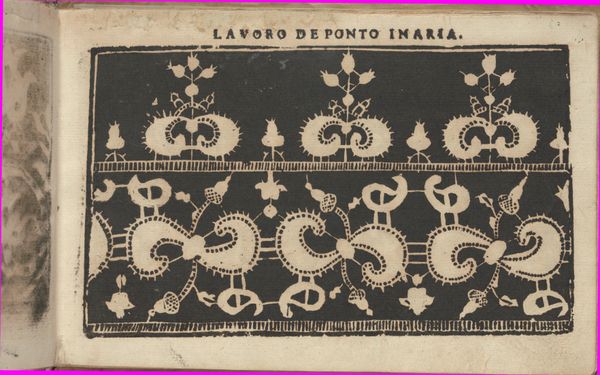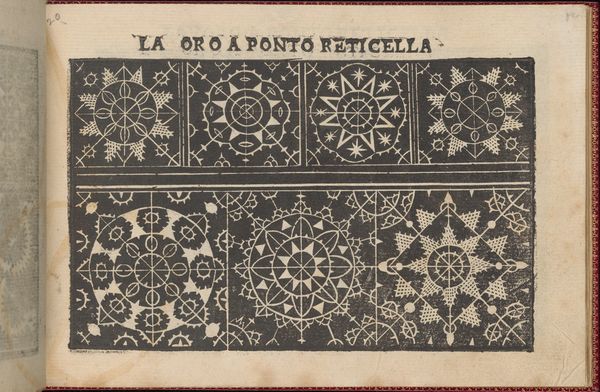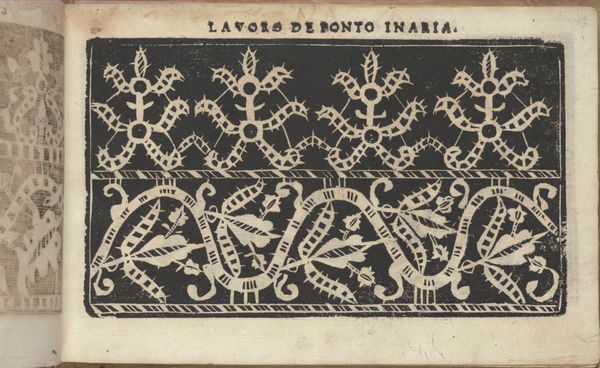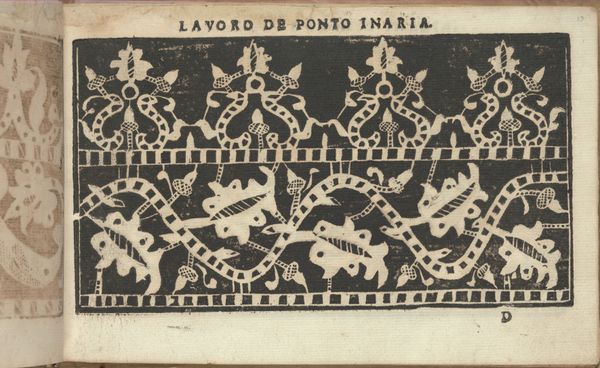
Studio delle virtuose Dame, page 11 (recto) 1597
0:00
0:00
drawing, print, woodcut, engraving
#
drawing
#
aged paper
#
toned paper
# print
#
book
#
pattern
#
old engraving style
#
flower
#
11_renaissance
#
woodcut
#
engraving
Dimensions: Overall: 5 1/2 x 8 1/16 in. (14 x 20.5 cm)
Copyright: Public Domain
Isabella Catanea Parasole created this woodcut pattern design around the turn of the 17th century. It appears as a page in her instructional manual, “Studio delle virtuose Dame,” published in Rome. As the title suggests, this book aimed to cultivate virtue in women through the mastery of skills such as needlework. Floral patterns like this were particularly popular for decorating household linens and clothing. The bold, symmetrical design reflects the period’s broader interest in order and balance, a visual language that was seen as a reflection of a well-ordered society. But consider the social implications of such a book. While seemingly benign, instructional manuals like Parasole’s played a crucial role in shaping gender roles and expectations. By providing women with specific skills, these books reinforced the idea that their primary role was within the domestic sphere. To fully understand this image, we can look to period documents, fashion history, and studies of domestic life. By examining the social and institutional contexts in which art is made, we gain insight into its complex meanings and its role in shaping our world.
Comments
No comments
Be the first to comment and join the conversation on the ultimate creative platform.
